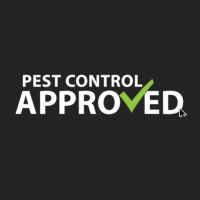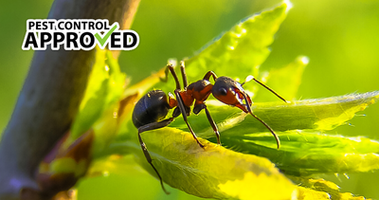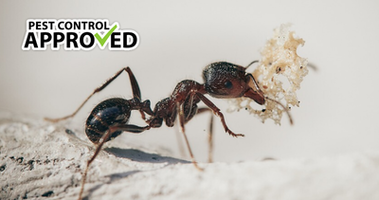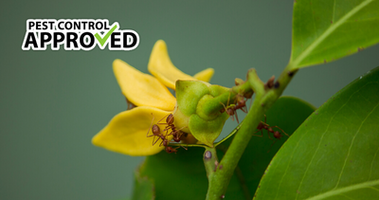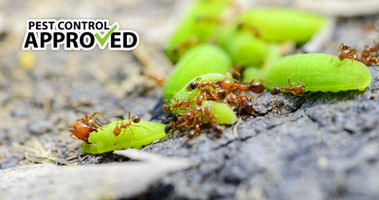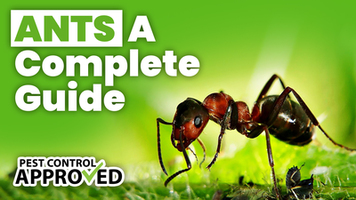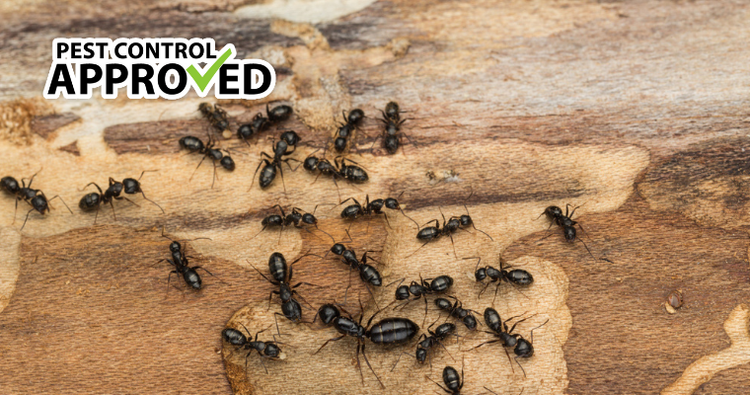
Carpenter Ants
Camponotus ants, more commonly called Carpenter ants, are one of the most common ant species in North America. There are over one thousand different species of carpenter ants. Unlike the pavement ant, which is an invasive species, Carpenter ants are endemic (native) to Canada and the United States. But Carpenter ant species are found worldwide. In Southeast Asia, one species of Carpenter ant can commit suicide to harm an attacker. They will expel a poisonous fluid from their bodies by bending so hard that their exoskeleton breaks! Fortunately, the Carpenter ants in North America are much less dangerous.
The Black Carpenter (Camponotus pennsylvanicus) ant is the most prevalent species in Canada. Carpenter ants are a very destructive species. They can damage homes, furniture, and decorative items. Each colony has from ten to twenty thousand workers plus drones and a queen. The larger established colonies can have up to 50,000 ants! Carpenter ant colonies consist of many workers, some ‘swarmers’ who mate with the queen, and one active queen. Immature queens will leave the nest when they become adults.
Appearance
Carpenter ants are easily distinguished from other species of ants. They are one of the largest species of ants, with workers ranging from 6 to 25 mm (.24 to 1 inch). The queen is larger, around 13 to 25 mm. Carpenter ants are dark brown with a reddish upper body or brownish-black all over. Their body is divided into three easily visible segments: the head, thorax, and abdomen. Their head is rounded with two bent antennae. Their antennae are bullet shaped with twelve segments. They are used for smell, touch, and communication. The head also contains strong mandibles (mouth parts) that are larger than other species. These mandibles are able to chew through wood. Their eyes are compound eyes that detect movement. But their eyesight is generally poor, and they rely on other senses, primarily scent to find food and their nest paths.
The thorax, or middle section contains their six legs. Their legs end in claws and the front legs can be used much like antennae to feel around, grasp items, and clean their body. Carpenter ants contain one pointed node (petiole) that connects their thorax to their abdomen. Their abdomen is large and rounded with hair ringing the edges. They have no stinger.
Life Cycle
In warm, humid conditions, often in spring, new queens and male swarmers take part in a nuptial flight. The female queen mates with multiple males while in the air. After mating, the males die and the queen searches for a new nest. The queen loses her wings after she finds her new nest. The nest is often located in downed trees, logs, or in man made wooden structures. She lays about twenty eggs in this new location and cares for them herself. After 11 to 26 days, the eggs hatch into larva.
The queen cares for the larva by feeding them liquid from her saliva glands. She survives off her own fat stores until the worker ants are old enough to forage. The larva become pupae after 9 to 50 days. Pupae are small, white, and legless. They look like grubs or grains of rice. It takes six to twelve weeks for eggs become adults. Until this time, the new queen continues to feed them and survive off her body fat. As the worker ants grow, they begin to take care of subsequent eggs and forage for the queen. Foraged food is regurgitated by the worker ants and fed to the queen and larva. A fully established colony is formed after three to six years. After this time, new queens may be born, and satellite nests made. A typical nest contains one queen who may live up to 25 years!
Habitat
In Canada, Carpenter ants are often found in the Rocky Mountains and surround areas. They thrive in woodlands, at the edge of the forest, and in urban areas. They seek out damp areas for their eggs and larva to survive. They frequently make extensive tunnels in wooden structures. Outdoors, they nest in dead wood such as fallen trees. They are able to chew through the damp wood with their strong mandibles. In nature, this action helps fallen logs decompose. In suburban areas, this often causes damage to homes and important structures.
Indoors, carpenter ants build nests in wooden structures such as windowsills, eaves, decks, and support beams. They cut passages into the wood to move from their nest to food sources. This is the most common sign of carpenter ants. Carpenter ants will often have a primary nest that contains the queen, workers, and newly hatched larva and a secondary nest that contains older larva, pupae, and some winged ants.
Diet
Although carpenter ants are known for the damage they cause to wooden structures, they do not eat wood. Wood is only chewed on to form nest material and create safe tunnels. Carpenter ants are both predators and scavengers. They are often found carrying dead insects. They consume the bodily fluids and leave the body’s shell behind. They also enjoy sweet things like nectar and honey dew. Honey dew is farmed from certain species of aphids. The ants farm the aphids by allowing them to live in or near their nests. The ants protect them from other predators and gather the honey dew they excrete. To gather honey dew, they lightly rub the aphids with their antennae. Unlike other ant species, Carpenter ants forage mostly at night. They prefer to nest near a constant food source but can venture up to 91 meters (100 yards) away.
Identifying an Infestation
The main sign of an infestation is seeing many ants travel along a path. These paths, called food paths, are pheromone marked routes that the ants commonly use to travel between food sources and their nest. If ants have established these paths in your home, you likely have a nest inside. A carpenter ant infestation also has unique signs including debris and veins. They leave curved veins in wooden structures such as structural beams or furniture. These can be shallow or deep into the wood. Sawdust and debris near these veins are a strong indicator of Carpenter ants. Dead ants are often found mixed into the sawdust. Carpenter ants also produce a rustling sound when they are in your wall. This can be easily heard with a wine glass or stethoscope.
Are They Dangerous?
Carpenter ants have no stinger or poison, but their bites can be painful. Because they chew through wood, their mandibles are larger and stronger than other ants. Their bite will often break the skin. Furthermore, they can inject formic acid into the bite, which makes it burn. But, while painful, their bites are not dangerous. It will itch or sting and may swell slightly. Clean the area with soap and water before applying a topical cream, as needed.
Carpenter ants are more dangerous to your home. They can cause structural damage to wooden support beams, ceiling joints, or even insulation. They can also cause cosmetic damage to furniture. A Carpenter ant infestation should be taken seriously. A home inspection may be required after their removal to make sure the house is sound and we always recommend a treatment by a trained Local Pest Control Exterminator.
Ant Prevention Tips:
- Repair rips in screens or mesh
- Fill cracks or gaps in windows and doors
- Keep house free of crumbs
- Brush pets when they come inside
- Store food in sealed containers
Removal Options:
- Spray ant scent trails with vinegar
- Use ant bait traps indoors
- Remove outdoor colonies near windows and doors
- Use aerosolized insecticide near entry points.
You can see more information on Carpenter Ants on our Complete Ant Guide

